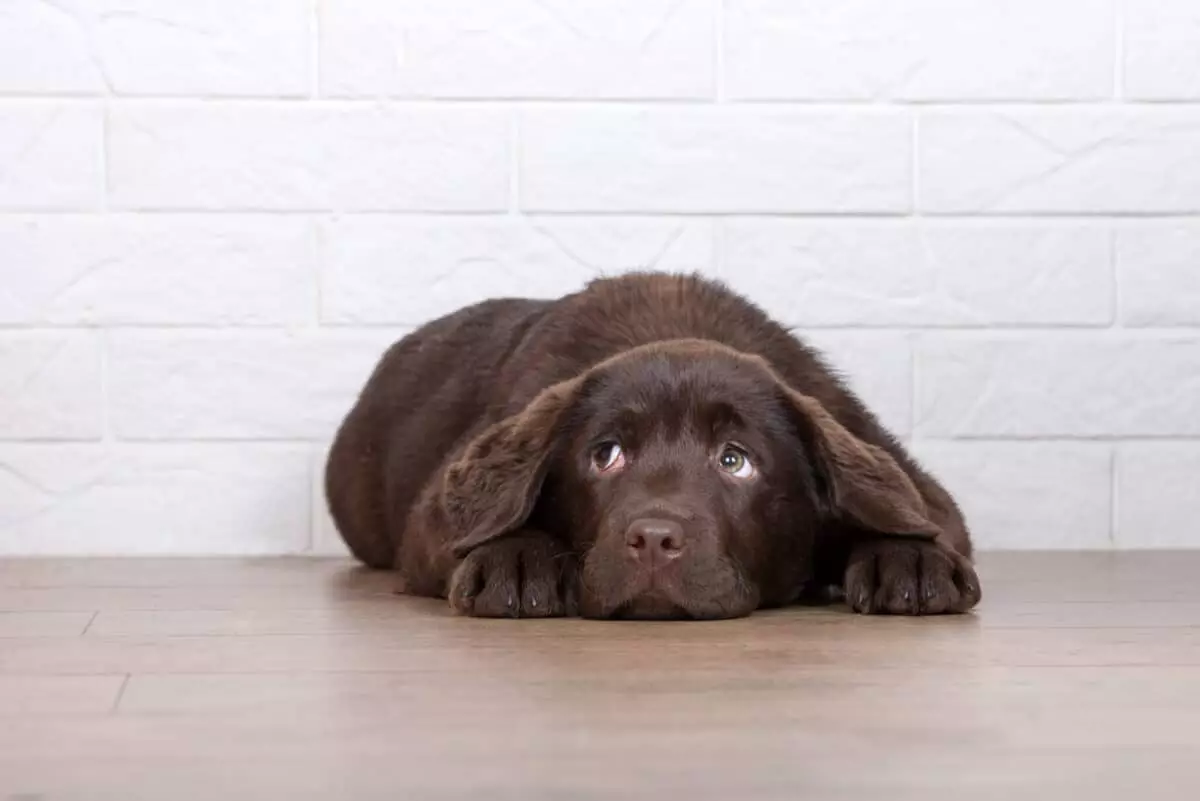Dogs are often seen tilting their heads while giving you a soulful gaze that seems to apologize for some mischief they’ve gotten into. This expression has popularly been dubbed the “guilty look,” a sight familiar to many dog owners across the globe. However, what might appear to be guilt is far more nuanced than mere contrition. By delving deeper into the psychology of our furry friends, we uncover a more intricate tapestry of emotions that shape this enigmatic expression.
Primarily, the so-called guilty look may be rooted in a dog’s innate tendency toward submissive behavior. Dogs are pack creatures by design, adhering to social hierarchies that dictate interactions within their groups. When a dog senses discontent or disapproval, they may instinctively lower their head, avert their gaze, and tuck their tail, not necessarily as an admission of guilt, but as a peaceful gesture to signal their non-threatening status. This appeasement behavior is crucial for maintaining harmony. In challenging moments, acknowledging the owner’s authority or emotional state becomes a fundamental survival instinct in canines.
Another contributing factor to the guilty look stems from a dog’s learned experience with consequences. If a dog has been rebuked for prior mischief, they may associate certain actions—like chewing on a beloved shoe—with looming punishment. In this scenario, the expression seen is less a sign of regret and more a reaction to anticipated reprimand. When a dog feels they might face consequences, their demeanor shifts to that of anxiety and fright, manifesting as what we interpret as guilt.
Dogs are remarkably in tune with the emotional states of their human companions. Research suggests that canines possess a unique ability to read human cues, both verbal and non-verbal. When a dog observes its owner returning home in a foul mood—or finds themselves amidst a scolding—they may exhibit a guilty look in relation to the perceived tension. This look often emerges from their own anxiety, not because they believe they’ve committed a major wrong, but because they are reflecting the emotional climate created by their human family members.
Beyond learned behaviors, confusion can play a significant role in prompting the guilty look. If a dog is uncertain about why they are being reprimanded, the ambiguous situation can lead to a submissive posture. Dogs thrive on consistent routines and clear communication. When these elements falter—whether due to unexpected circumstances or vague cues—dogs might retreat into what they know best: submission. This response is not an acknowledgment of guilt but rather an attempt to clarify their standing within the relationship.
Beneath the surface, the guilty look is sometimes a desperate plea for reassurance and connection. Dogs are social animals seeking approval from their “alphas”—their human companions. When they sense they have upset their owner, their immediate instinct may be to seek reconciliation. This urge to reestablish bonds reveals a profound emotional connection, focusing less on what they’ve done wrong and more on restoring relational equilibrium.
Another layer of meaning can be attributed to the empathetic qualities many dogs exhibit. When their owner is upset, these creatures may instinctively display behaviors that signal empathy. What appears to be guilt could just as easily be an acknowledgment of discomfort regarding the owner’s emotions. A dog’s displaying of specific gestures designed to comfort their human showcases their role as emotional support animals, even if the emotion causing the display is not related to their own actions.
In the wild, respect for authority is paramount within dog packs. In this context, a dog may adhere to a submission tactic when feeling the displeasure of their owner, who they view as the “alpha.” This instinct enables dogs to re-establish certain dynamics following perceived threats to their social standing. Here, the guilty look is not a sign of guilt but a recognition of the hierarchy in their social structure.
As time goes on, dogs can develop habits based on their environment; if a dog receives comfort after displaying a guilty expression, this behavior might become habitual. They learn that appearing guilty can be a strategy to elicit attention or affection from their owners, creating a self-sustaining cycle of behavior that simplifies a complex emotional landscape.
Ultimately, the notorious guilty look in dogs reveals a sophisticated blend of emotions and instincts, transcending the simplistic view of blame and remorse. Instead of merely signifying wrongdoing, it reflects a myriad of feelings anchored in fear, confusion, empathy, and the intrinsic desire for connection. By recognizing these nuances, dog owners can better navigate their pet’s emotional world, fostering an environment of trust rather than misunderstanding. Understanding these underlying motivations not only enriches our bond with dogs but enhances our approach to training and interaction, paving the way for more harmonious and rewarding relationships.


Leave a Reply